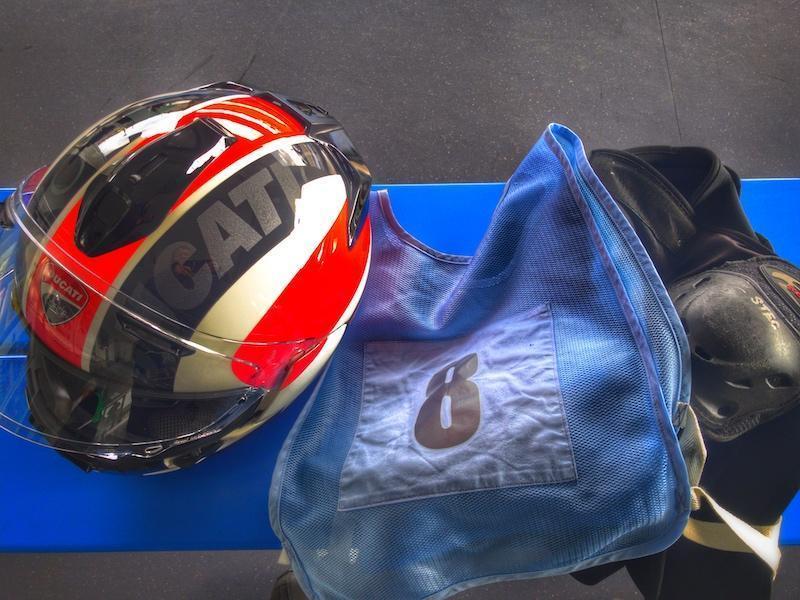It’s been a while since I took the lesson, but before I forget, I’d like to leave you with my notes from the 6th STEC “Sporty Ride Challenge.”
This day was the first day of the New Year, January 3, 2022. My car was buried in snow.
Since my last STEC lesson, I haven’t been able to drive my car.

The handle opens from behind with a “Snap!”
As for how to hold the handlebars,
I’d heard various things, like holding a ball in front of your body, bringing your arms in a circular motion,
grabbing the end of the handlebar like you’re grabbing a doorknob,
or holding it with your pinky finger,
but the angle of my wrists wasn’t quite right.
I’ve heard that the basic angle for your wrist is to make sure your arm and the back of your hand are in a straight line.
I’ve adjusted the angles of the brake and clutch levers to that line,
but it just doesn’t feel right.
I was constantly adjusting the angle to find a good spot,
and during that day’s lesson I got some hints.
“Snap it onto the grip from behind!”
Of course, the premise is that you’re in a riding position with your upper body slightly leaning forward, pull your arms back,
then push them forward and snap them into place.
This position is a neutral one,
and I think it varies from person to person.
I thought it would be natural if there were brake and clutch levers beyond this,
but I haven’t tried it on my bike yet.
I hope the snow goes away soon!
Don’t stretch your ankles!
Where do you place your foot when stepping?
In the past, I used to step on it near the base of my big toe, but now I tend to step on it with the arch of my foot.
Here at STEC we are told to step on the arches of your feet.
In the lesson, we were told that if you step with the tip of your foot, your ankle will move and the force won’t be transmitted to your step.
I knew this because I had experienced it on a bike.
From my experience,
there was a period when I practiced riding a trials bike for a while.
Seeing that I was having difficulty lifting the front,
he told me to place the arch of my foot on the pedal and lower my heel.
I was surprised because I thought bicycle pedals were something you rest your feet on.
If you step on your toes, the force of your stepping is supported by your calf muscles,
so your ankles move and you lose force.
The trick is not just to place your arch on the pedal,
but to lower your heel, which locks your ankle.
Your body from the knees down becomes like a rod, so the force of pedaling is transmitted directly.
This one piece of advice made me flip my whole bike over (lol)
It’s the same on a bike.
On a bike, not only will it help you turn left and right more quickly when doing things like slaloms, but lowering your heels also has the added benefit of making it easier to hold your ankles.
Heavy-duty riders are good at clutch operation!?
There was a lesson in slow riding.
I ride with the clutch half engaged, the accelerator constant, and using the rear brake to adjust my speed, but it wasn’t going well and when he saw how I was struggling with it, he gave me the advice, “Try fixing the rear brake and adjusting with the clutch.”
This worked better and allowed me to get through the slow ride area.
After the lesson, he looked at my helmet and said, “Riding a bike with a long ratio makes you better at clutch operation.”
The story goes that heavy bike riders are good at clutch operation.
These are my STEC lesson notes.




